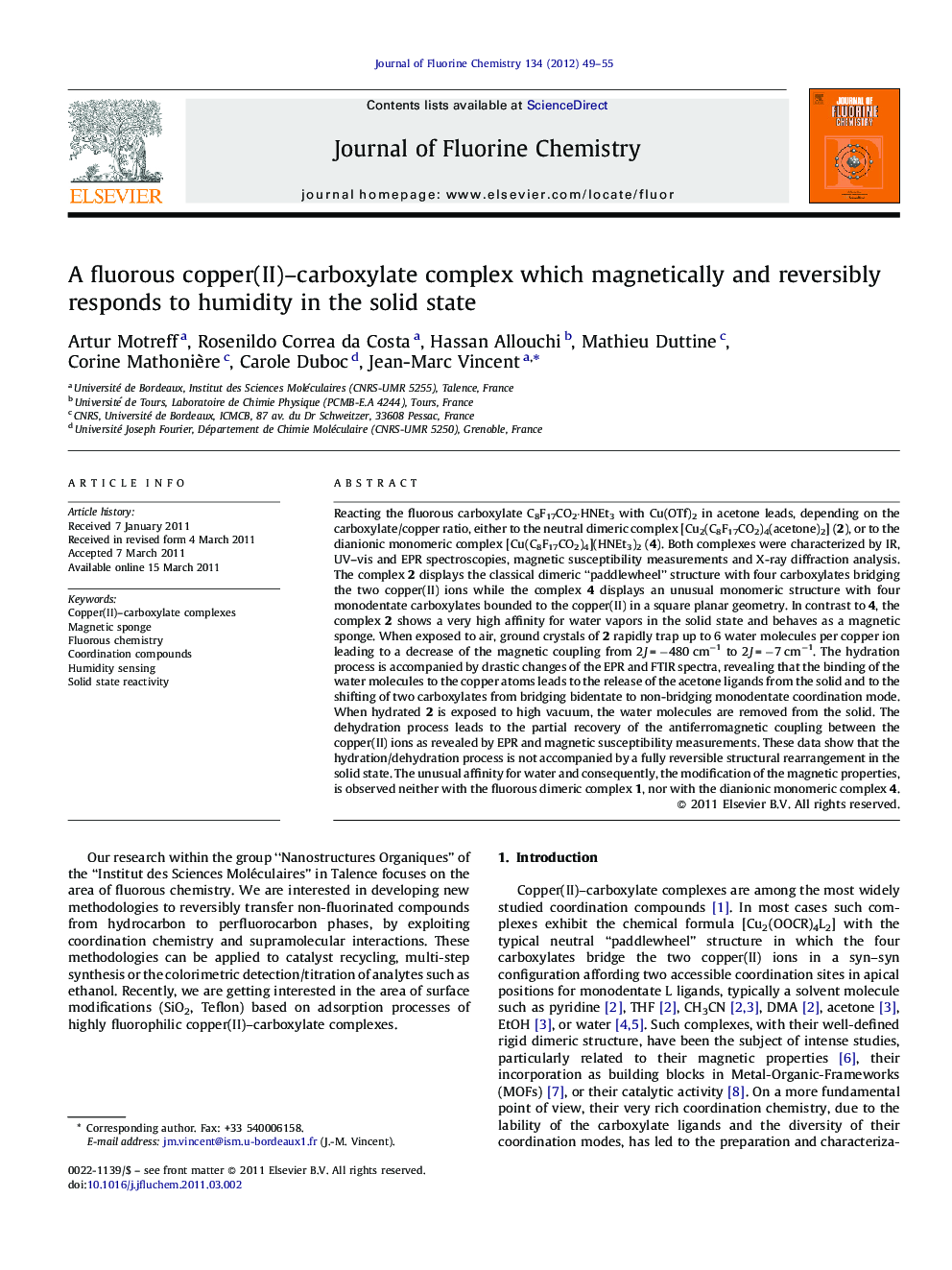| Article ID | Journal | Published Year | Pages | File Type |
|---|---|---|---|---|
| 1314089 | Journal of Fluorine Chemistry | 2012 | 7 Pages |
Reacting the fluorous carboxylate C8F17CO2·HNEt3 with Cu(OTf)2 in acetone leads, depending on the carboxylate/copper ratio, either to the neutral dimeric complex [Cu2(C8F17CO2)4(acetone)2] (2), or to the dianionic monomeric complex [Cu(C8F17CO2)4](HNEt3)2 (4). Both complexes were characterized by IR, UV–vis and EPR spectroscopies, magnetic susceptibility measurements and X-ray diffraction analysis. The complex 2 displays the classical dimeric “paddlewheel” structure with four carboxylates bridging the two copper(II) ions while the complex 4 displays an unusual monomeric structure with four monodentate carboxylates bounded to the copper(II) in a square planar geometry. In contrast to 4, the complex 2 shows a very high affinity for water vapors in the solid state and behaves as a magnetic sponge. When exposed to air, ground crystals of 2 rapidly trap up to 6 water molecules per copper ion leading to a decrease of the magnetic coupling from 2J = −480 cm−1 to 2J = −7 cm−1. The hydration process is accompanied by drastic changes of the EPR and FTIR spectra, revealing that the binding of the water molecules to the copper atoms leads to the release of the acetone ligands from the solid and to the shifting of two carboxylates from bridging bidentate to non-bridging monodentate coordination mode. When hydrated 2 is exposed to high vacuum, the water molecules are removed from the solid. The dehydration process leads to the partial recovery of the antiferromagnetic coupling between the copper(II) ions as revealed by EPR and magnetic susceptibility measurements. These data show that the hydration/dehydration process is not accompanied by a fully reversible structural rearrangement in the solid state. The unusual affinity for water and consequently, the modification of the magnetic properties, is observed neither with the fluorous dimeric complex 1, nor with the dianionic monomeric complex 4.
Graphical abstractThe fluorous dimeric copper(II)–carboxylate complex [Cu2(C8F17CO2)4(acetone)2] (2) magnetically and reversibly responds to humidity in the solid state.Figure optionsDownload full-size imageDownload as PowerPoint slideHighlights► We study the structure and reactivity in the solid state of fluorous copper(II)–carboxylates. ► A monomeric copper(II) complex exhibits an unprecedented square-planar geometry. ► A dimeric copper(II) complex reversibly and magnetically responds to humidity in the solid state.
